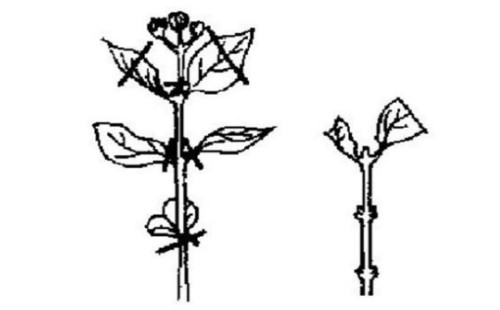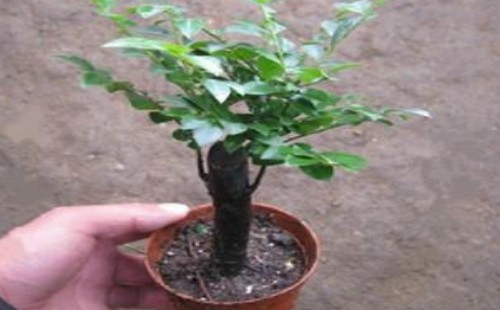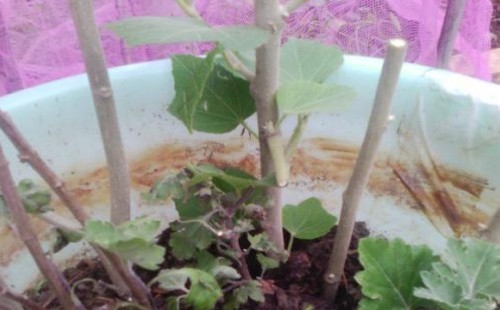Cutting methods of Paeonia lactiflora
Paeonia lactiflora, like many potted flowers and plants, can breed seedlings by cutting, but unlike many other flowers and plants, Paeonia lactiflora can not only cut tender cuttings, but also adopt root cutting method. However, as the public use softwood cuttings to breed seedlings is more popular, so today the editor will share this cutting technique for you.

First, choose twigs
Paeonia lactiflora can cut strong twigs from adult mother plants from April to June to make cuttings for cuttage breeding of young plants. The purpose of cutting shoots as cuttings is because the shoots of peony flowers grow sturdy, grow and develop well, and the nutrients in the branches are more abundant; more importantly, the twigs are also rich in auxin and soluble nutrients, such as soluble nitrogen, sugar and amino acids.
In addition, the active enzymes in the shoots of peony flowers are relatively good, and the ability of regeneration is very strong, while the proportion of lotus aldehyde and gibberellin in the shoots of peony flowers is relatively small, so the strong shoots of peony flowers are cut as cuttings, the survival rate is often very high after cutting. This can be regarded as a good way to propagate peony potted seedlings.
Second, making cuttings
After selecting the suitable twigs, we can make cuttings. First of all, determine the cutting position, usually about 5-8 cm below the twig is more appropriate. But you need to make sure that the cuttings have 2-4 bud holes and 2-3 leaves at the same time. Relatively speaking, cutting strong thick branches has stronger germination ability than relatively thin branches, and the germination effect of branches with more leaves is better than that of branches with fewer leaves.
Third, soak cuttings
After making the cuttings, soak them in clean water for half an hour to 1 hour to allow them to fully absorb water. Then the rooting powder was glued to the base of cuttings to promote the germination of branches. Of course, if there is no rooting powder, you can also soak the lower end in an aqueous solution of naphthalene acetic acid for about 5 seconds. In this way, the purpose of promoting the rapid rooting of cuttings can also be achieved.
Of course, you can also soak the cuttings with the help of willow branch extract, which is to cut the willow branches of the same year, cut them into shorter sections, and soak them in water for a week before use. Then put the cuttings in the soaking solution of willow branches for half a day to 1 day, which can accelerate the wound healing and improve the survival effect to a great extent.
3. Cutting process
Before cutting, it is necessary to make the culture soil and let the culture soil have appropriate humidity. The original cuttings of Paeonia lactiflora were then inserted into the pre-prepared culture soil, while the part of the cuttings inserted into the culture soil should be kept at about 3 cm. Then the soil around the cuttings is gently compacted to stabilize the cuttings, and at the same time, it can contact the branches more fully, which is more conducive to the germination of the cuttings.
IV. Plug-in management
After the cuttage is finished, we need to irrigate enough water to maintain the growth of the cuttings, and then cover it with a plastic film to keep it warm and humid. It is usually necessary to control the ambient temperature between 20 and 25 ℃ and keep the humidity between 80% and 90%, so you need to spray water frequently and uncover the plastic film to breathe. If all goes well, it will take at most one month to take root.
After the cuttings of Paeonia lactiflora take root, we need to properly control the frequency of watering and spraying, and then remove the plastic film. As the cuttage growth of Paeonia lactiflora is relatively slow, after survival, let it continue to grow in the seedling pot for a period of time, until the arrival of spring is suitable for seedling transplanting. Because the temperature rises gradually in spring, it is warmer, and the cuttings are more active in growth, so the survival rate of transplanting in the upper pot is higher and it is easier to take the pot.
Time: 2019-06-07 Click:
- Prev

How to water the lobular red sandalwood bonsai
The effect of foliage observation of lobular red sandalwood bonsai is excellent, but the watering in the process of maintenance and management is very important. Many people worry that improper watering will make the leaves of lobular red sandalwood bonsai turn green and cause all kinds of growth problems. In fact, the watering of lobular red sandalwood bonsai is quite simple, generally speaking, watering should be frequent. that
- Next

Breeding method of potted hibiscus flower
Hibiscus, people often call it hibiscus, hibiscus flower, is a large and beautiful flower plants, and colorful bloom. Moreover, hibiscus blossoms like clouds, which is the city flower of Chengdu City. It is not only widely used in landscaping, street trees and other aspects
Related
- Fuxing push coffee new agricultural production and marketing class: lack of small-scale processing plants
- Jujube rice field leisure farm deep ploughing Yilan for five years to create a space for organic food and play
- Nongyu Farm-A trial of organic papaya for brave women with advanced technology
- Four points for attention in the prevention and control of diseases and insect pests of edible fungi
- How to add nutrient solution to Edible Fungi
- Is there any good way to control edible fungus mites?
- Open Inoculation Technology of Edible Fungi
- Is there any clever way to use fertilizer for edible fungus in winter?
- What agents are used to kill the pathogens of edible fungi in the mushroom shed?
- Rapid drying of Edible Fungi

